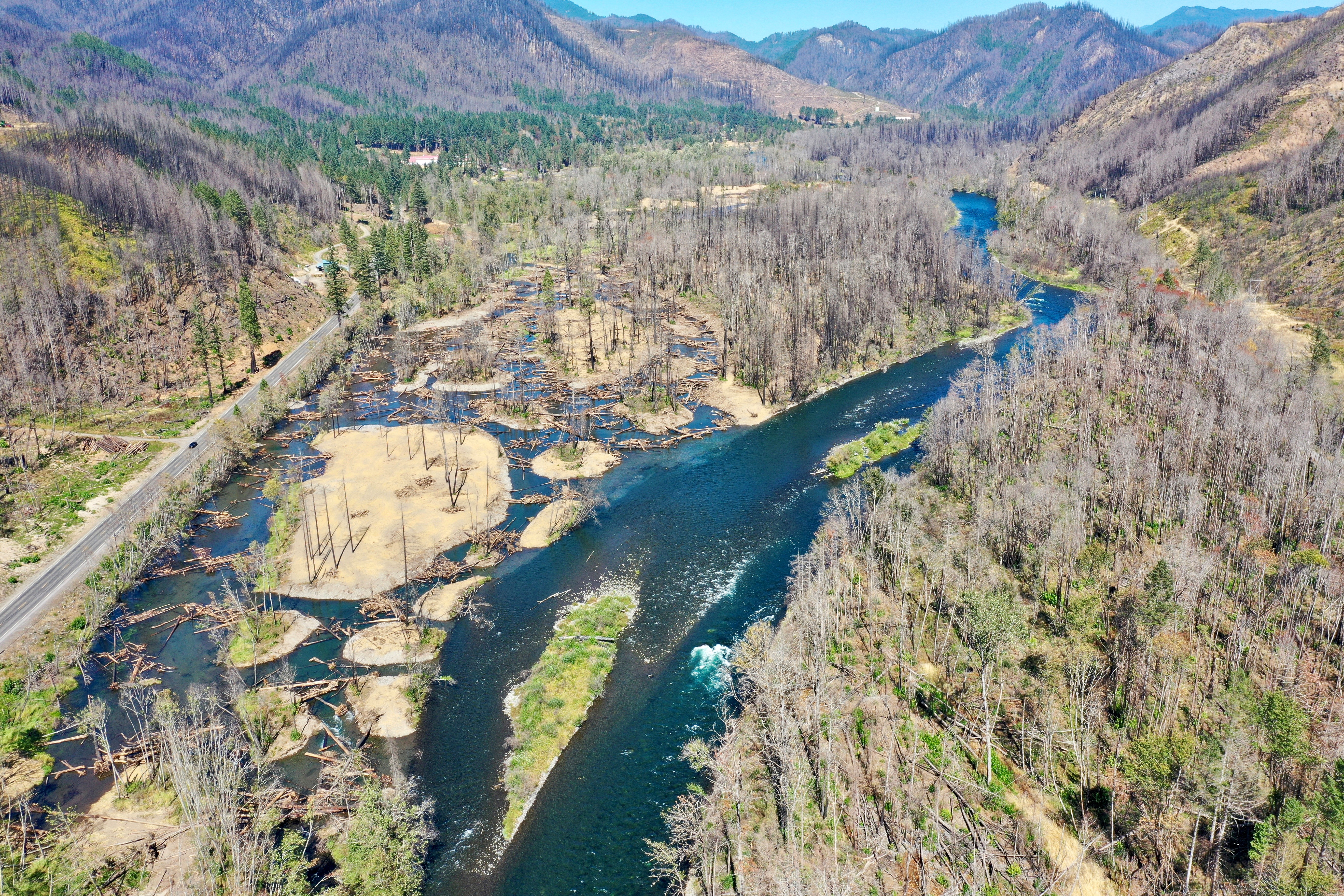Related News
Related News
-
EWEB Hometown Heroes compete internationally
Out of 290 teams from 14 different countries, EWEB's Lineman Rodeo team places in the top third of competitors.
Find Out More -
EWEB's Halloween Truck-or-Treat is a huge success
Community members are accustomed to spotting EWEB trucks around Eugene streets and neighborhoods. But last week, those familiar vehicles looked a little different. At EWEB's second annual Truck-or-Treat Customer and Crew Appreciation Event, our fleet transformed into a festive Halloween spectacle.
Find Out More -
Let's Talk Turkey. Is your family ready for winter?
We're heading into the holidays, but that also means snow, ice, and not-so-nice weather might be in the forecast. Here are some tips to prepare in advance.
Find Out More -
Vote for your favorite Public Power Week Posters
The top five submittals will receive awards. Help us pick the winners.
Find Out More -
EWEB Hosts Annual Spill Drill to Protect McKenzie River
EWEB led emergency responders in its annual “spill drill” on the McKenzie River on Wednesday, Oct. 15, at the Trail Bridge Campground.
Find Out More -
A day in the life: Monitoring water quality throughout the McKenzie Watershed
Follow Senior Environmental Specialist David Donahue as he collects water quality samples from throughout the watershed as part of EWEB's early warning system for threats to Eugene's drinking water.
Find Out More -
EWEB Partners with Eugene School District 4J to Celebrate New Kennedy Middle School Emergency Water Station Site
Hundreds of attendees practiced filling up water containers at Saturday's demonstration event.
Find Out More -
Electric Projects underway in North & South Eugene
Underground lines and disaster-resilient power poles are part of EWEB’s infrastructure upgrade near Eugene’s largest natural resource area.
Find Out More -
EWEB general manager to retire in 2026
EWEB launches nationwide search for next leader to continue the progress of the last decade and ensure a smooth transition.
Find Out More -
Quartz Creek: Setting the Stage for Floodplain Restoration
The project resets the floodplain along 1.8 miles of a formerly channelized creek to improve water quality, fish habitat and natural disaster resiliency.
Find Out More -
Pure Water Partners: 5 Years of Regeneration
As EWEB and the Pure Water Partners observe the fifth anniversary of the Holiday Farm Fire, we celebrate major milestones in the watershed's recovery and check back in with PWP landowners who still have a lot of work ahead as they continue to rebuild their lives.
Find Out More -
You can’t predict the next disaster, but you can prepare
The earthquake lasted less than a minute. But now the power’s out. The tap runs dry. Cell service is spotty. Would you be ready?
Find Out More -
EWEB completes helicopter installation of salmon habitat features
EWEB adds downed trees and 2,000 tons of gravel to the Uupper McKenzie River below Tamolitch Falls to improve spawning habitat.
Find Out More -
Oregon’s New Utility Laws and How EWEB Customers Already Benefit from Fair, Transparent Rates
Oregon’s POWER Act and FAIR Energy Act target investor-owned utilities. Learn how EWEB’s local, community-owned model already meets these goals.
Find Out More -
EWEB Celebrates Operators on the 75th Anniversary of the Hayden Bridge Filtration Plant
Learn more about the Water Treatment Plant Operators who have kept the Hayden Bridge Filtration Plant running for the last 75 years.
Find Out More - Show More
MRT, USFS wrap construction at Finn Rock Reach
September 08, 2021

The McKenzie River Trust, Willamette National Forest, and BCI Construction recently completed Phase One of the Finn Rock Reach floodplain restoration project.
The project along the McKenzie River above Quartz Creek enhances valuable floodplain habitat for endangered Chinook salmon, bull trout, and western pond turtles. The approach can also help buffer the river from debris slides and serve as natural storage for clean water.
"Rivers have been harnessed and confined for the last 150 years," says Joe Moll, Executive Director for the Trust. "Seeing the water reinhabit such an expansive, diverse floodplain offers some hope in trying times."
Finn Rock Reach is the latest testing ground for a creative approach to restoration that aims to bring back much of the complexity that makes floodplains such productive habitats and valuable water resources. These projects are designed to increase the breadth and depth of areas where water can move and linger among smaller channels, deep pools, islands, and jumbles of downed trees. That increased residence time helps cool, clean and hold water, providing a wealth of good for fish, wildlife, and people.
"Historically, wood and sediment would have settled out in this valley. The river was really dynamic, and multiple channels would move around, and change all the time," said Willamette National Forest Fisheries Biologist Kate Meyer. Floodplains allow water to spread out across the landscape and slow down. That not only mitigates fire and drought risk but allows sediment to drop out, improving water quality.
"The more floodplains the better," EWEB Water Resources Supervisor Susan Fricke said. "We increase resiliency when we let the ecosystem function as it's supposed to."
In recent years, the Willamette National Forest, McKenzie Watershed Council, and EWEB collaborated on a similar approach to restoration on the South Fork of the McKenzie and on Deer Creek. Those projects have been remarkably productive for fish and wildlife, and notably resilient to fire.
"The whole idea is to try to do this across as many of the creeks as we can," EWEB's Watershed Restoration Program Manager Karl Morgenstern said. "Our prime directive at EWEB is to provide reliable, safe drinking water to our community. That means protecting water quality at the source - miles upstream from the metro area - and all the way to the tap at community homes and businesses."
Wild Chinook salmon will move out of the mainstem McKenzie and spawn in these floodplain waters throughout September.
The Finn Rock Reach team is excited to see how they respond to these enhanced habitats. At South Fork and Deer Creek, salmon spawning bed (redd) counts increased by as much as twenty-fold in the weeks post-construction.
"What we're seeing for these valley-bottom restoration projects is, if you build it, they will come," Fricke said.






